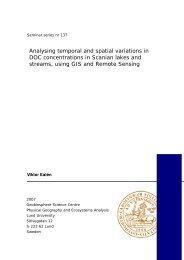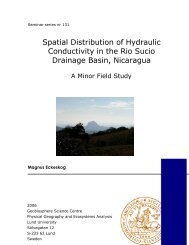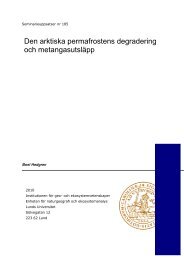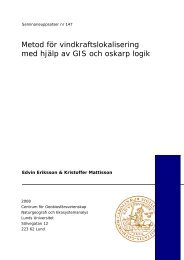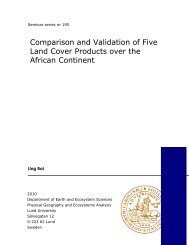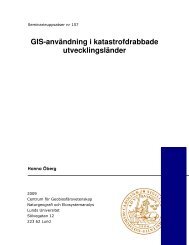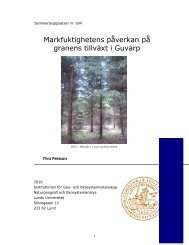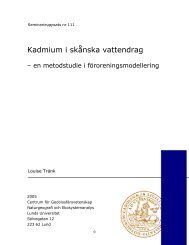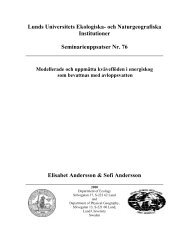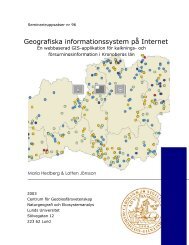Finding Potential Sites for Small-Scale Hydro Power in Uganda: a ...
Finding Potential Sites for Small-Scale Hydro Power in Uganda: a ...
Finding Potential Sites for Small-Scale Hydro Power in Uganda: a ...
Create successful ePaper yourself
Turn your PDF publications into a flip-book with our unique Google optimized e-Paper software.
For the specific case of <strong>Uganda</strong>, a country of 24 million people, it is estimated that lessthan 4% of the population has access to electricity, and that only 1% of the ruralpopulation of 20 – 21 million enjoys its benefits. This situation results <strong>in</strong> h<strong>in</strong>drances,mak<strong>in</strong>g everyday duties hard and time consum<strong>in</strong>g, which <strong>in</strong> turn complicates the processof development. For example, particularly the women spend a great deal of time andenergy on collect<strong>in</strong>g wood or f<strong>in</strong>d<strong>in</strong>g other solutions such as diesel generators or carbatteries <strong>for</strong> satisfy<strong>in</strong>g their energy needs (www.sida.se). Furthermore, after sunset <strong>in</strong><strong>Uganda</strong>, which is at 6 PM throughout the year, the rural population must rely on torches,candles or small kerosene lamps <strong>for</strong> light, which causes health and environmentalproblems. Work at night is not possible and economic development, even <strong>in</strong> daylight, islimited without electric power (ovonics.com).Rural Electrification Agency’s (REA) ma<strong>in</strong> approach to amend <strong>Uganda</strong>’s prevail<strong>in</strong>genergy situation is through extension of the grid to rural areas. This measure has beensporadic at best, due to the lack of available funds. Also the dispersed nature of thepopulation, difficulties <strong>in</strong> bill<strong>in</strong>g and collection, cont<strong>in</strong>u<strong>in</strong>g capacity shortages and thehigh cost of grid extensions contributes to the complicated situation and makes the gridextension impractical <strong>for</strong> much of the population <strong>for</strong> the <strong>for</strong>eseeable future.An efficient, relatively cheap and one of the most environmentally friendly alternatives tothe grid based electrification is small-scale hydropower stations. <strong>Small</strong>-scale hydropowersystems capture the energy <strong>in</strong> flow<strong>in</strong>g water and convert it to usable energy (www.smallhydro.com).The capacity <strong>for</strong> most stand-alone hydro systems not <strong>in</strong>terl<strong>in</strong>ked to the grid,and suitable <strong>for</strong> “run-of-the-river” <strong>in</strong>stallation reaches up to 500 kW, and the potentialdepend on the availability of a suitable water flow. Where the resource exists it canprovide cheap, clean and reliable electricity. A well-designed small-scale hydropowersystem can blend with its surround<strong>in</strong>gs and have m<strong>in</strong>imal negative environmentalimpacts (www.small-hydro.com; Fraenkel et al., 1991).Moreover, small-scale hydropower stations have a huge, as yet untapped potential <strong>in</strong>most areas of the world and can make a significant contribution to future energy needs.It depends largely on already developed and proven technology, yet there is considerablescope <strong>for</strong> development and optimisation (www.small-hydro.com).2



